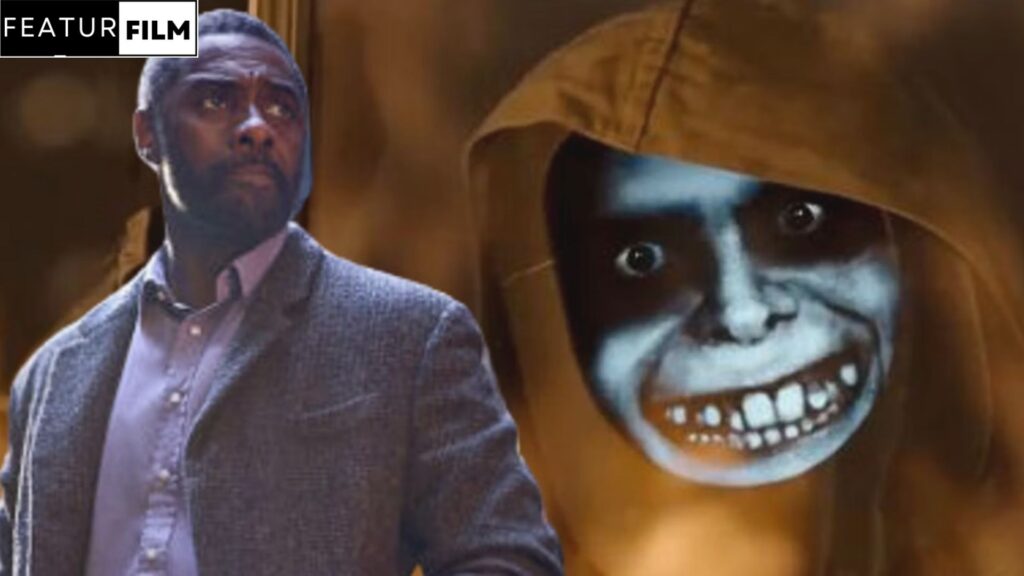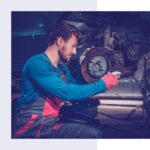The Charm of Authentic Locations


When it comes to the filming locations of “Luther: The Fallen Sun,” authenticity was the guiding principle. The production team meticulously scouted for settings that would align with the series’ narrative. These locations were not mere backdrops; they became characters in themselves, each telling a unique story. The choice to opt for real settings was a deliberate one, intended to immerse viewers fully into the world of the series.
In the hustle and bustle of the entertainment industry, the decision to use authentic locations added a layer of realism to “Luther: The Fallen Sun” that resonated deeply with the audience. It was not just about constructing a set; it was about finding places that had their own history, quirks, and charm. This authenticity set the series apart, making it more relatable and engaging for viewers.

Table of Contents
A Glimpse into the Urban Enigma

One of the remarkable aspects of “Luther: The Fallen Sun” was its portrayal of urban life, and the filming locations played a pivotal role in this depiction. The series delved into the complexities of the city, its beauty, and its shadows. From bustling streets to quiet alleys, the locations were carefully chosen to reflect the multifaceted nature of urban existence.
As we journey through the urban enigma of the series, we see how the filming locations brought the city to life. They were not just generic streets but avenues that held secrets, squares that witnessed drama, and neighborhoods that breathed with their own rhythm. The urban locations became an essential part of the storytelling, creating a world that felt tangible and intriguing.
The Allure of Historic Landmarks
In “Luther: The Fallen Sun,” the historical backdrop is not just a setting; it is a character in itself. The series drew on the allure of historical landmarks to infuse the narrative with depth and resonance. These landmarks, with their rich history and architectural beauty, added layers of meaning to the storyline.
The filming locations chosen for their historical significance became pivotal in shaping the characters and their journeys. They symbolized continuity and change, echoing the themes of the series. Viewers found themselves transported through time as they explored the series’ locations, feeling the weight of history and the promise of the future. The allure of these historic landmarks was a testament to the production team’s commitment to creating a world that felt real and immersive.
Through these subheadings, we delve into the human aspect of “Luther: The Fallen Sun” filming locations, showcasing how they were not just settings but integral elements in the series’ storytelling.
Nature’s Canvas
Amid the urban and historical charm, “Luther: The Fallen Sun” also embraced the natural beauty of its filming locations. The series offered viewers a glimpse of pristine landscapes, serene lakes, and lush forests. These natural settings served as a stark contrast to the urban drama, providing moments of respite and reflection.
Incorporating nature’s canvas into the series was a deliberate choice, as it allowed the characters to reconnect with the world beyond the city’s confines. The filming locations in natural settings became places of solace, transformation, and self-discovery for the characters. This duality in settings added depth to the storyline and resonated with the audience, who could appreciate the harmony between urban chaos and natural tranquility.
The Local Flavor
“Local” is not just a term but an essence in the world of “Luther: The Fallen Sun.” The production team recognized the importance of embracing the communities that hosted the filming locations. These communities contributed to the authenticity of the series, infusing it with local culture and flavor.
From lively street markets to neighborhood cafes, the local culture played a significant role in the series. It wasn’t just about shooting in a location; it was about becoming a part of the community and celebrating its uniqueness. This connection between the production team, the filming locations, and the local culture fostered a sense of belonging that extended beyond the screen.
Architectural Wonders

The architecture in “Luther: The Fallen Sun” was more than just a backdrop; it was a visual narrative. The choice of architectural wonders as filming locations added a layer of symbolism to the series. From towering skyscrapers to centuries-old cathedrals, each structure had a story to tell.
The architectural wonders became metaphors for the characters’ journeys. They represented ambition, tradition, innovation, and the passage of time. These structures were not just part of the scenery; they were integral to the character development and plot progression. “Luther: The Fallen Sun” used these architectural wonders to create a visual language that resonated with viewers.
These aspects of the filming locations in “Luther: The Fallen Sun” highlight the human element in the series. The locations were not just chosen for their aesthetics but for their ability to enrich the storyline and connect with the audience on a profound level.
The Magic of Transformation
One of the most remarkable features of the filming locations in “Luther: The Fallen Sun” was their capacity to transform. From day to night, from season to season, these locations underwent incredible metamorphoses. This transformation paralleled the character arcs within the series, symbolizing growth, change, and adaptability.
Viewers could witness the same location taking on a completely different ambiance, reflecting the evolving emotions and circumstances of the characters. This dynamic use of filming locations added a layer of intrigue, making each visit to a familiar place feel like a new adventure.
Cinematic Symphonies
The filming locations in “Luther: The Fallen Sun” were not just spaces but stages for cinematic symphonies. Each location was carefully choreographed to synchronize with the series’ storytelling. From sweeping aerial shots of the cityscape to intimate close-ups in cozy cafes, every frame was a visual masterpiece.
The choice of locations was not arbitrary; it was a symphony of aesthetics, emotions, and narrative. “Luther: The Fallen Sun” used its locations as characters in their own right, contributing to the overall atmosphere and emotional impact of the series.
A Tourist’s Delight
The series didn’t just capture the essence of its filming locations; it also became a tourist’s delight. Fans of the show embarked on pilgrimages to the sites featured in “Luther: The Fallen Sun.” Walking the same streets, sipping coffee in the same cafes, and admiring the architectural wonders allowed viewers to step into the world they had fallen in love with.
This added a unique layer of interaction between the series and its audience. The locations weren’t just settings for the characters; they were destinations for fans. “Luther: The Fallen Sun” bridged the gap between fiction and reality, allowing viewers to experience the magic of its world firsthand.
In Conclusion
The filming locations in “Luther: The Fallen Sun” were not mere backdrops but essential components of the series’ narrative. They embodied the spirit of the characters, symbolized the themes, and contributed to the emotional depth of the storyline. These locations served as a testament to the thoughtful craftsmanship behind the series and its commitment to connecting with the audience on a human level.
As viewers journeyed through the urban landscapes, immersed themselves in the natural beauty, and experienced the local culture, they were reminded that the world of “Luther: The Fallen Sun” was not a distant fantasy but a reflection of the human experience. The series used its locations to evoke emotions, tell stories, and create a bond with its audience that extended far beyond the screen. It was a testament to the power of storytelling and the ability of well-chosen locations to enhance that power.





